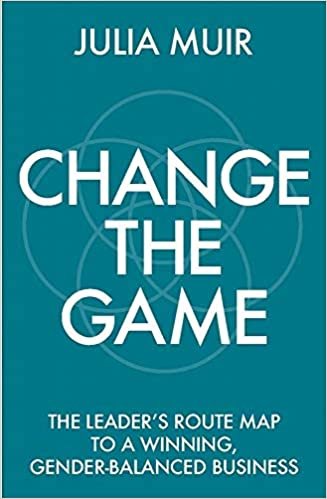Slaying the dragon of positive discrimination

When building gender-balanced businesses, game-changing leaders face myriad myths, rumours, supposed universal truths, stereotypes, false assumptions, wilful blindness and those who are perhaps well-meaning but very ill-informed. Read this excerpt from Julia Muir’s book ‘Change the Game: The Leader’s Route Map to a Winning Gender-Balanced Business, published by Practical Inspiration Publishing.
The dragon that must be slayed is the multi-headed monster that breathes the fiery words of ‘positive discrimination’. It aggressively attacks any attempt to tackle inequities and create a level playing field for women or ethnic minorities. It is unleashed to forcefully assert that actions to remove such discrimination will in fact lead to discrimination against white men. It is usually set free by the mediocre male rather than the talented man who is confident in his abilities to compete fairly. It is often drawn upon by those who deny the existence of inequity out of lack of awareness or prejudice. It is even used by women who mistake the removal of unfair advantage against them for special treatment or tokenism.
For the avoidance of any doubt, I strongly maintain that discrimination against anyone in any form is morally wrong. Token appointments on the basis of skin colour or gender hurt everyone, including the appointed, in the long run. Suggestions that solutions should be adopted to ensure white men are disadvantaged are unacceptable because two wrongs do not make a right. However, removing unfair advantage and giving fair treatment to all is a very different matter. It is essential that those who historically benefitted from an advantage learn that removing it is not the same as them being put at a disadvantage versus others, while also recognizing that when you’re accustomed to privilege, equality could feel like oppression.
So to slay the dragon of positive discrimination we must name and dispel the damaging ‘myths’, and replace them in the company’s collective memory with ‘legends’ that are facts and truths that make systemic unfair advantage transparent. We must then create win-win solutions that benefit all parties.

Here is one of the myths:
A male majority is a meritocracy
I’ve heard countless times ‘I always hire the best person for the job; I don’t care what their gender is.’ Leaders often believe they preside over a meritocracy. They’ve risen to the top so they believe the system is fair and the best will succeed. But sometimes they change their minds when they get to the very top job.
An important protagonist in this myth is the ‘Mediocre Male’. These men may be blocking top roles through default, lack of competition, or being in the right place at the right time, rather than merit. Every leader I speak to acknowledges that these men exist in their organizations, and that they probably wouldn’t have been promoted had a wider talent pool been available.
The mediocre male that has been promoted to a level beyond their competence is enshrined in Lawrence Peter’s famous Peter Principle. There are of course mediocre females too, but they tend not to be over-promoted unless they are an ill-judged token female appointment. In fact, author Tom Schuller argues that women usually work one level below their competence, and has coined the term the Paula Principle to describe it. It’s likely the mediocre male will no longer be over-promoted when competing with a gender-balanced talent pool of top performers, and a reduction in management mediocrity will lead to an improvement in profits.
The 2020 Parker Review suggests that the need to reassure that merit will not be compromised to achieve diversity is actually an indicator of inherent bias in the organization. This is because it implies that diverse boards would be difficult to create on merit, and that women and people of colour might not make the grade.
A company where there is a significant imbalance in favour of males (or females for that matter) simply cannot be a true meritocracy. You may state that you hire on merit and that you don’t hire on colour or gender, but if you are all white men you clearly are recruiting and promoting in a way that favours being white and male, albeit without realizing it. This is an uncomfortable truth for many senior executives who believe they rose to the top due to superior ability rather than because there were fewer hurdles to jump, or because talented women didn’t want to or couldn’t enter the race. There are norms that favour the hiring and progression of a certain profile of a person, and in most industries, it’s the profile of the white man, some of whom will rise to at least middle management with varying levels of performance. It is not enough to say that women don’t apply, or there aren’t any women out there. If talented women are not applying, it’s most likely due to the macho image or reputation of your company or sector.
The real issue isn’t just biased; it’s usually also ignorance and lack of awareness of the issues. The forces at play include the different behaviours between the sexes and how the organization’s decision-makers value one set of behaviours over the other. Women will tend to believe that their hard work will be seen and rewarded, and feel uncomfortable with self-promotion and networking. Men will tend to understand that visibility to the top team and positive impression management is critical, and who you know will often be more useful than what you know. If both apply for promotion, the recruiter’s familiarity and knowledge of a person will often cloud whether they actually are the higher performer.
Also, an organization can place obstacles in front of women that many men can simply jog around. The requirement to relocate relies on there being a supportive spouse willing to side-line their career; the expectation to attend a long-term residential development programme often depends on the availability of 24-hour childcare; the obligation to work long hours in senior roles depends on the ability to source both domestic and childcare support. More men than women have this level of support from their life partner. In my career, I’ve often been disappointed to see just how many men would apply for relocations and even accept them without discussing it with their wives; they knew that it would be impossible for their wife not to comply after the fact without appearing to seriously undermine them or damage their career.
An organization that is gender-balanced and diverse is much more likely to be a true meritocracy because nothing has stopped a very wide range of people from succeeding. So we must replace the old myth of meritocracy with a new legend: Merit-based Inclusion Creates a True Meritocracy. The best person actually did get the job, irrespective of their sex or race or family status. Barriers to progression that gave an advantage to one type of person over another have been removed. Leaders are inclusive and are comfortable to promote people who do not look or think like them. Successful heterogeneous diverse teams are the real evidence of a true meritocracy.




